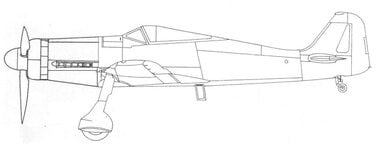Howard Gibson
Senior Airman
For starters, Fw190s were simply not available for the Battle of Britain. Making it available means starting the design earlier before critical tactical lessons are learned, and using an available radial engine. BMW132?There needs to happen awful lot of the German preparations before the success in the BoB happens.
Fighters need drop tanks. Having the 109s and 190s (for this scenarion) outfitted with such would've meant that the Bf 110s are much less pressed wrt. the longer-ranged escort.
Longer firing times for the main armament; the 8 LMG set-up on the LW fighters would've been probably more practical than staying on the 60 rd drums. Although a belt-fed MG FF, or at least 90 rd drum would've been excellent.
Bombers will still need the increased defensive firepower. The Do 17 was with a feeble bomb load when compared with either the He 111 or the Ju 88. And even the bomb load of these was lame when compared with what the Allies used from 1942 on above Germany.
The Ju 87 was as much of a liability as it was an asset.
Strategy - what are the intentions of the air campaign? Is it defeating the RAF in such a scale that southern half of the UK is the Luftwaffe playing field? Or is it destroying of the British industry? Or is it to cut off the UK from receiving the materials across the Atlantic? Germany can't do all of the three in ewhat is left of 1940.
How to use the assets (ie. tactics, doctrine)? Does the LW has enough of fighters to do both freijagd and close escort? I'd say no.
When your alternate history consists of the Germans not making mistakes, we should consider correcting some British mistakes too. They can switch from the Idiotenreihe ("idiot's file") to the finger four fighter formations. Maybe they can make fewer Whitleys and Hampdens, and more Spitfires.

